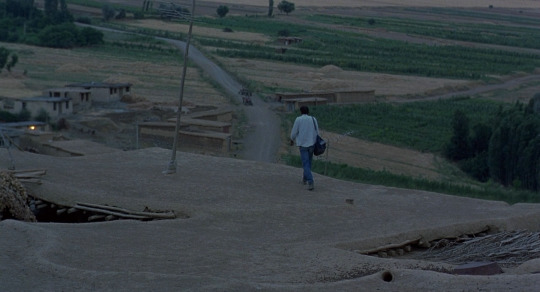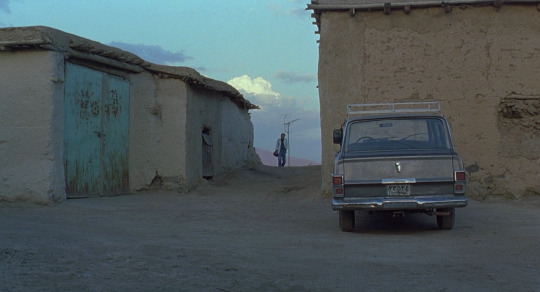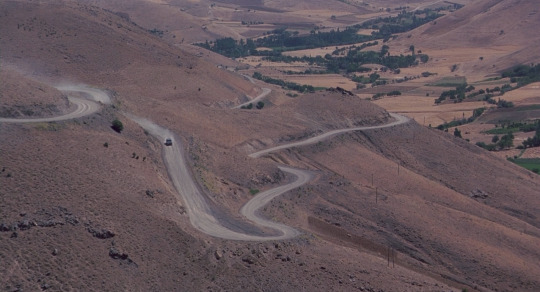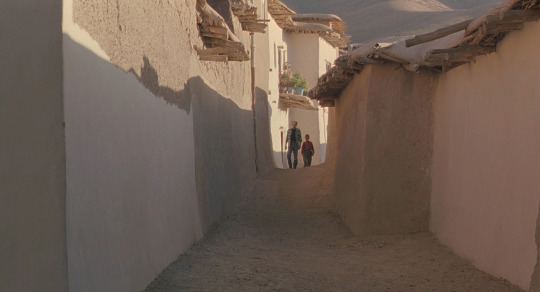Text

Tile tableau by M.C. Escher, Dirk Schäferstraat 59, Amsterdam, 1960
48 notes
·
View notes
Text
This is one of my favorites hand down

32K notes
·
View notes
Photo






The Wind Will Carry Us , Abbas Kiarostami , 1999.
801 notes
·
View notes
Text
this guy just raps numbers
9K notes
·
View notes
Text
Keira is one of countless Greenlandic women in Denmark who have been separated from their children after undergoing highly controversial “parenting competency” tests (known as forældrekompetenceundersøgelse or FKU) used by social services to assess whether parents are suitable to care for their children. In common with many of these cases, Zammi was placed with Danish foster parents. Keira fears Zammi will lose her language and identity as a result. For years, parenting competency tests have been criticised by campaigners and human rights bodies that say they are culturally unsuitable for people from Inuit backgrounds, and therefore discriminatory.
Generally, the tests are used if a child is believed to be struggling with challenges in behaviour, feelings or thoughts – and will form one part of a social worker’s investigations, says clinical psychologist Isak C Nellemann, who used to perform FKU for the Danish state, and now helps advise families and lawyers in cases like Keira’s. But, often, he says, simply being Greenlandic will be enough to get the attention of social workers.
The tests cover attachment, personality traits, cognitive abilities and psychopathology, and take about 15-20 hours. It is almost impossible to pass them, says Nellemann; even he and his colleagues have failed to do so. Questions can include “What is glass made of?” and “What is the name of the big staircase in Rome?” Nellemann argues that the tests are culturally specific and a poor way to measure innate intelligence. “There is a lot of stigmatisation of people from Greenland,” he says. “We don’t know why we should use these tests for parenting.” [...]
Until 1953, Greenland was ruled by Denmark as a colony. Now the territory is part of the Danish kingdom, with Copenhagen controlling its foreign and security policy. In recent years, there have been multiple scandals about historic and more recent population-control practices that have been described by many in Greenland, including the former prime minister, as a genocide. These include the IUD scandal, in which 4,500 women and girls were fitted with contraception without their knowledge or consent between 1966 and 1970. Many of the details have only recently come to light.
Keira, who has three children, all of whom have been removed from her, was subjected to an FKU test in 2014 that is understood to have contributed to the removal of Zoe, who was then nine, and Keira’s son, Nolan, who was just eight months old and breastfeeding; he is now 11. Nolan, whom Keira sees twice a week, now lives with his father. Keira was given another test last year that contributed to the removal of Zammi. When she was given the most recent test, she says she was told it was to see if she was “civilised enough”. The two assessments, 10 years apart, were made by the same Danish-speaking psychologist, who was also Keira’s therapist. Keira’s first language is Kalaallisut (West Greenlandic). She is not fluent in Danish.
3K notes
·
View notes
Text
NORTH CAROLINAAAA COME ON AND RAISE UP


250 notes
·
View notes
Text

854 notes
·
View notes
Text
Using the same base word for chattel slavery as non-chattel slavery really papers over how qualitatively monstrously different they are
101 notes
·
View notes
Text
[...]
Iran is a failed capitalist state because of this. With 10% of the world’s proven oil reserves and 15% of its gas reserves, Iran could be an “energy superpower” like Saudi Arabia (not that this would be the solution to Iran’s economic development in a world where fossil fuel production needs to be phased out). But because it has a regime in power that is anathema to Israel, the Sunni sheikhs and the West, it has not been allowed to develop. The failure of both regimes under the Shah and then under the mullahs is revealed by the movement in the profitability of Iranian capital over the decades. The global economic crisis of the 1970s saw a sharp fall in profitability, laying the economic basis for the failure of the Pahlavi dynasty and its overthrow.
[...]
Former Iranian President Mahmoud Ahmadinejad says 60% of national wealth is controlled by by just 300 people, most of whom shift their wealth abroad to buy foreign real estate and/or salt it away in secret accounts. According to the World Inequality Database, the top 1% of Iranians by wealth own 30% of all national wealth and the top 10% own nearly two-thirds, while the bottom 50% own just 3.5%.
[...]
Neither wing of the elite is interested in improving the conditions of Iran’s working class. An average worker’s wage is about $150-200 a month, with many leaving the small towns where poverty reigns, seeking work in the big cities. The reality is that average incomes have hardly budged since the 1980s.
Before the deluge of war, labour unrest had been rising as workers demanded higher wages to keep up with inflation. The High Council of Labor recently proposed a 23.4m toman living wage benchmark, but workers argued that the real cost of living is at least 29 million tomans. The government’s proposed minimum wage of 14 million tomans has sparked outrage, as it is far below the poverty line. According to the state-run ILNA news agency, a petition demanding a 70% wage increase had garnered over 25,000 signatures from workers. Ali Moqaddasi-Zadeh, head of the Islamic Labor Councils in South Khorasan, warned last February: “With a 23 million toman living cost estimate, workers will be forced into slum living and homelessness. Next year will be one of extreme inflation and hardship unless the government takes action.”
The housing crisis further compounds the problem, with 45% of household incomes spent on rent. Workers report that even renting a single room is becoming unaffordable. With inflation accelerating, even staple foods cannot be paid for. The cost of poultry has forced citizens into long queues to buy affordable chicken in many cities. Iran’s food inflation has surged to over 35%. State-controlled media reported long bread lines in major cities, reminiscent of wartime rationing. Many bakeries have been forced to shut down due to rising flour and ingredient costs.
In the first half of this year, Iran’s economy continued to stagnate with a struggling energy sector, a rapid depreciation of the national currency and an inflation rate exceeding 40%, causing a severe decline in purchasing power.
[...]
136 notes
·
View notes
Text
China’s installations of wind and solar in May are enough to generate as much electricity as Poland, as the world’s second-biggest economy breaks further records with its rapid buildup of renewable energy infrastructure. China installed 93 GW of solar capacity last month – almost 100 solar panels every second, according to an analysis by Lauri Myllyvirta, a senior fellow at the Asia Society Policy Institute. Wind power installations reached 26 GW, the equivalent of about 5,300 turbines. While estimates for the amount of power generated by solar panels and wind turbines vary depending on their location and weather conditions, Myllyvirta calculated that May’s installations alone could generate as much electricity as Poland, Sweden or the United Arab Emirates. Between January and May, China added 198 GW of solar and 46 GW of wind, enough to generate as much electricity as Indonesia or Turkey.
26 June 2025
157 notes
·
View notes
Text

Insane map. Like i get that its slightly inflated by neighboring states not selling booze on Sundays but still. Wisconsin bitches just be drinking like crazy lol
19 notes
·
View notes








